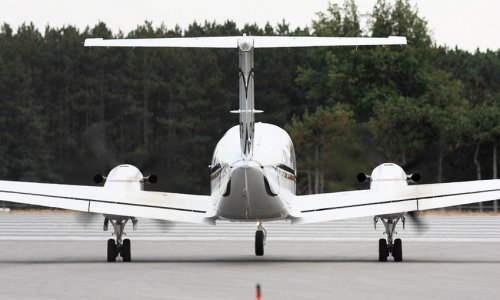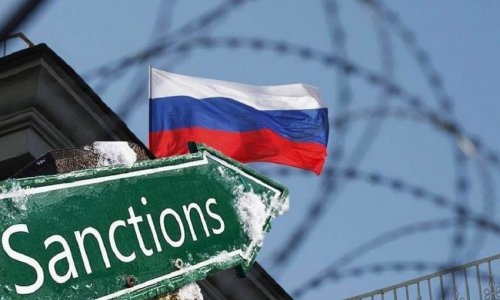According to the March 2014 Worldwide Cost of Living Index, completed twice a year by the Economist Intelligence Unit, affordable cities can be found on almost every continent. The report compares prices of 160 goods and services, from cars to bread to wine, across 131 cities.For reasons of geographical diversity – as well as to include cities whose international communities, career opportunities and levels of safety would particularly appeal to expats – we focused on what it would be like to live in five of the 10 cheapest cities on the Economist’s index. The other five, not detailed below, were Karachi, New Delhi, Damascus, Algiers and Riyadh. Mumbai, IndiaRanked 131 out of 131The most affordable city on the Economist’s report, India’s most populated city is also one of its most diverse. When the Suez Canal was built in 1869, making Mumbai one of India’s primary trading ports, the city’s population exploded – particularly with merchants and settlers from Europe and Asia. As well as becoming a melting pot of different cultures, the metropolis developed into an epicentre for opportunity, particularly in business and in the film and fashion industries. “If you have the drive and the talent, you can come from anywhere in the country or the world and make a name for yourself in Mumbai,” said Kaamna Bhowjwani-Dhawan, Mumbai native and founder of travel blog Momaboard. As a result, the city has a very work-hard, play-hard mentality, Bhowjwani-Dhawan said, with a vibrant social scene centred around the newest velvet-roped clubs and trendy bars. The social scene can be enjoyed relatively cheaply, too: movie tickets and cocktails cost half as much as they do in New York City and London, according to international price database Expatistan. Other aspects of living in Mumbai are also relatively affordable. Public transportation and taxis run one-tenth the price of their New York or London counterparts, with an 8km taxi ride costing just 161 Indian rupees (the equivalent of $2.70 or £1.59). Service is cheap, too. “For under $1,000 [60,000 Indian rupees or £600] a month, you can hire a staff of a cook, a housekeeper and a chauffeur,” said Bhowjwani-Dhawan.Despite Mumbai being listed as the world’s most affordable city, many residents said they feel the housing costs can be prohibitively expensive; some younger residents cannot afford to move out on their own, despite good salaries. As a result, “many suburban areas which were considered far-flung have now become thickly populated,” said Deepa Krishnan, native resident and owner of Mumbai Magic Tours. In particular, the city has expanded to the north, where more affordable modern high-rise apartment complexes have emerged, complete with gyms and swimming pools.In South Mumbai, apartment buildings are smaller – only three to six storeys – with many built in the Victorian British Raj or Art Deco styles (in fact, Mumbai has the world’s largest concentration of Art Deco buildings outside of Miami). In West Mumbai, meanwhile, the suburb of Bandra attracts Bollywood movie stars and business owners to its individual bungalows. In Mumbai, 85sqm is 65,500 rupees (£660 or $1,105).Kathmandu, NepalRanked 127 out of 131As a gateway to the Himalaya Mountains, Kathmandu has a very outdoor-oriented culture. Not everyone is a Sherpa – but even office workers will often leave their desks to work outside in the sun. When not working, locals enjoy the always-growing restaurant scene or hanging out at the bars; by law, bars must close at midnight, so nightlife here gets started earlier.Housing and basics contribute to Kathmandu’s affordability. Bread costs 36 Nepali rupees ($0.37 or £0.22) for two people, a full restaurant lunch costs about 385 rupees ($4 or £2.39) and a litre of gas costs 141 rupees ($1.50 or £0.89). At an average of 34,000 rupees ($300 or £215) a month, rent for a 85sqm house is particularly affordable.Yet Kathmandu does not have a glut of high-rise apartment buildings, which is what often makes housing affordable in other regions. Instead, most residents live in single-family houses with more space and gardens. The older parts of the city, such as the districts of Thamel and Asan, have traditional architecture marked by detailed wood and stonework; newer areas like Kalamati have boxier, simpler homes. The wealthiest residents and foreigners tend to live in the new, gated communities popping up on the outskirts of the city and in the surrounding Kathmandu Valley. The city caters to tourists and Western tastes, which can make it an expensive place to live for those who are not careful. “If you buy your food in the local market, eat out in local eateries and basically live like a Nepali, Kathmandu is very affordable,” said Zeljka Shah, who recently moved to the city from Croatia and writes The Roofs of Kathmandu blog. “On the other hand, if you like to treat yourself to the typical Western food bought in grocery stores, and eat in Western-type restaurants, it’s quite pricey.” Panama City, PanamaRanked 124 out of 131, tied with BucharestExpats around the world are drawn to this Central American country for its mild climate and affordability. And even though residents often have six-day work weeks, they know how to relax when the time is right. “Close to paydays, bars and clubs come alive with partiers,” said Alex Hardy, an American expat who teaches in Panama City. Casco Viego and Calle Uruguay are favourite nightlife areas for their variety of venues, from backpacker bars to upscale lounges. The drinks come cheap too – about $2 for a beer and $9 for a cocktail, compared to $7 and $14 respectively in New York (Panama’s official currency is the US dollar, though it is called the balboa instead of dollar).A construction boom a few years ago has left the city with modern high-rise apartment complexes scattered among traditional, older buildings. “Newer apartment buildings tend to be big on amenities and ritz, but small on space,” Hardy said. “Apartments in older, smaller buildings tend to be far more spacious.” With a glut of unoccupied high-rise housing, rental costs remain reasonable in most parts of the city, including El Cangrejo in the centre. Housing runs about $2,500 per month for 85sqm.Recent public projects – including the revitalisation of the shoreline off Avenue Balboa in the Caldonia barrio (neighbourhood) – are giving the city an added energy. The Avenue Balboa area now has a promenade, park and activity centre, attracting residents from around the city on sunny days. “It’s a game changer for the city, with a legacy that will enrich people forever,” said Vicki Marie Stolsen, author of The Bachelor Chapters, who recently moved full-time to the neighbourhood from Seattle. “I love living across the street!”Locals also like how accessible the city and its neighbouring areas are with taxis and public transportation. “Taxis are cheap and plentiful, and trips on the Metrobus within the city are 25 cents,” Hardy said. “I can get to the cooler mountains or Caribbean beaches with clear water within two hours.” Bucharest, RomaniaRanked 124 out of 131, tied with Panama CityThe capital city of Romania was once known as “Little Paris”, due to the French influence in its architecture and grand boulevards. Many historical buildings fell into disrepair when the communist regime took hold after World War II, but over the last decade there has been an increased effort toward restoration – particularly in the historic centre, where many of the older buildings have recently been renovated, and cafes and restaurants bustle with friends gathering for a night out.However, those that live in the city might be just as likely to find themselves in someone’s home for dinner. “You often get invited into the houses of people who you've just met a few days before and they will lay out the best for you regardless of their wealth,” said Andreea Francu, a Bucharest native who photographs the city on Bucharest Daily Photo. Residents pride themselves on their reputation for hospitality to both locals and foreigners alike. Most locals live in high-rises that were developed during the communist regime, but “every Bucharestian dreams of living in a house and having a garden and a dog”, Francu said. The architecture is eclectic, with everything from ancient medieval buildings, to square utilitarian buildings, to Belle Epoque and Art Nouveau styles. Pipera, in the city’s north, is a particularly popular neighbourhood for expat families thanks to its American, British and French schools. Another quarter in central Bucharest, Tineretului, is desirable for its easy access to two major metro lines and to Tineretului Park, which has a large lake and a number of playgrounds. The city remains more affordable than others in Western or Central Europe: housing costs 80% less than London (about 2,832 lei, $873 or £521, for a 85sqm space), and monthly public transportation costs 90% less than London (56 lei for a monthly ticket, vs $1.85 or £10).Jeddah, Saudi ArabiaRanked 123 out of 131Many visitors to Jeddah are on pilgrimages to Mecca. Those who stay longer, however, find the city to be affordable – and to have a unique blend of conservative and modern. Saudi Arabia’s religious laws inform much of the city’s culture and social interactions: technically, single men and women are not allowed to mix together, so restaurants separate the family and single sections from the men sections. But at night the city comes alive, with diners heading out to restaurants and men bringing out their fancy cars for drives around downtown. Many social gatherings also happen in the family homes, so it’s key to make local friends. “When you enter a Saudi house, you are greeted with Arabic coffee and dates,” said Lyn Birrell, who emigrated from Bicton, Western Australia and writes the blog Living in Jeddah. Social status is very important here, so even typical, two-storey houses are often furnished with crystal chandeliers and gold-trimmed furniture.Despite the interior decorations, Jeddah is an affordable city to live in. Gasoline prices are some of the world’s lowest in the world, costing just 0.50 riyal ($0.15 or £0.08) for a litre of gas (compared to $1.05 in New York City). Housing and food also come cheap: rent costs 3,797 riyal ($1,012 or £601) for 85sqm and bread costs 2.24 riyal ($0.60 or £0.35). But foodies and chefs, beware: produce is not as plentiful as in other parts of the world. “We do not have the variety of vegetables and fruit here as in Australia, which took a bit of getting used to. They eat a lot of coriander, parsley, mint, saffron and herbs,” Birrell said.On the other hand, crafty residents can take advantage of the other cheap goods on sale. Birrell sews, for example, and said that beautiful fabric and material can be purchased quite cheaply, making clothing costs very affordable. Travellers can take advantage of cheap flights to nearby destinations too: roundtrip airfare to cities like Dubai and Cairo can be booked for less than 1,200 riyal ($300 or £190). (BBC)Bakudaily.az
The world’s most affordable cities - PHOTO
World
11:00 | 30.05.2014

The world’s most affordable cities - PHOTO
Moving overseas can seem like a costly proposition, at least with all the upfront expenses – but relocating to some cities can actually save you money in the long haul.
Follow us !










